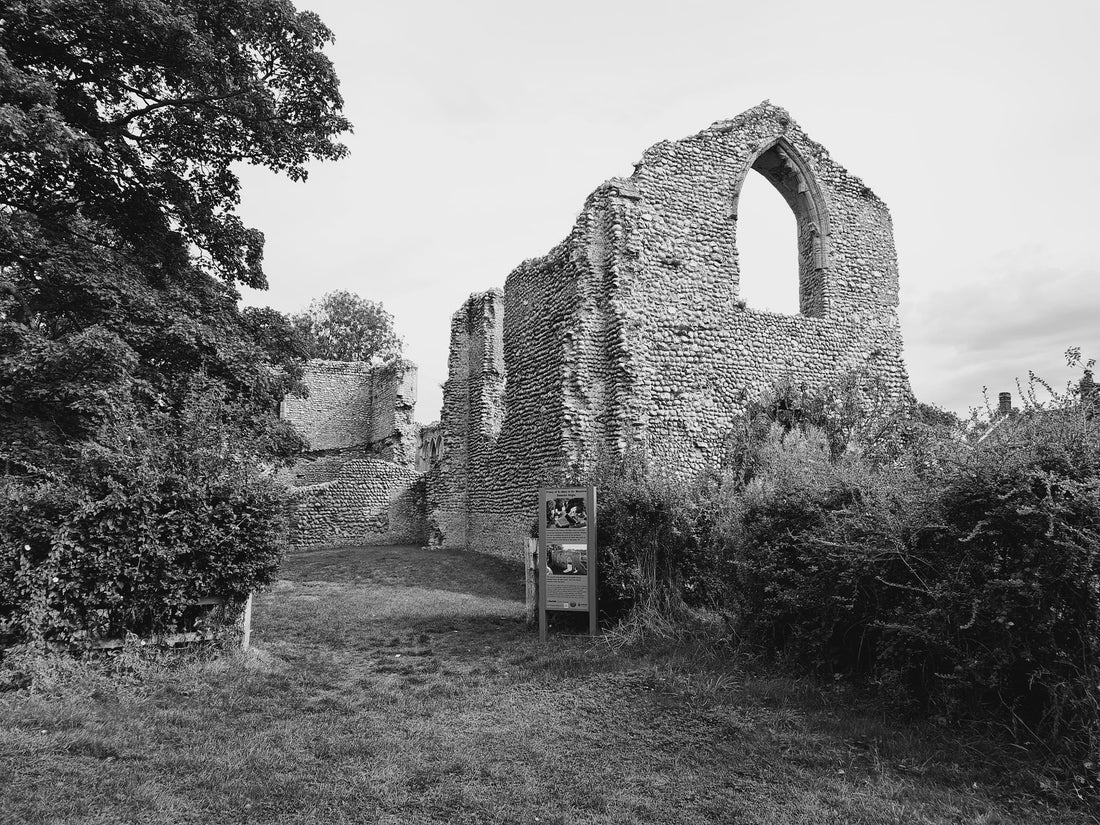
By Chris Emery
It’s a short drive and now I’m parking up next to the Beeston and Sheringham Commons, just off the coastal A149. It’s a sultry Norfolk afternoon, the kind that feels like an endless Sunday. Traffic is thrumming by, waves of it sweep over the bend, the hill, and change gear as they hit the village. There’s an ice cream van parked up here in the layby – it says, Cream of Norfolk on it. I’m too focussed on my trip to buy a 99, I look both ways, pause for a break in the traffic then run across the road, dodging between the cars, and reach the edge of the meadow. These commons of sandy soil sit on a layer of clay above a deep chalk bed that sweeps across this part of the coast and was laid down nearly two million years ago. I’m on the edge of England and I’m here to visit something rather special.
If you stand still and listen on this scrub land all you hear is the backwash of traffic, yet if I keep walking, just 100 yards across the summer scorched turf, here on my right, there’s a sound of woodpigeons and chuckling jackdaws and a breeze is running through a big willow; it sounds like running water. Let’s keep walking north towards Hanrae Close and Church Lane and, farther back, Beeston Bump, that large ice age hill of sand and gravel that dominates the landscape. It’s overcast, but bright and the temperature is rising, it’s 25°C now. Just past the common, there is a line of houses, most are Victorian spec-built terraces, but behind them, over the railway, reaching up to the base of the hill, are scores of eccentric Edwardian villas and tiny agricultural cottages. I’m not here to contemplate them, I’m turning right, to walk 300 feet down Beeston Common towards a clumpy-looking paddock that spreads west. I’m here to see something much older than these cottages and far more mysterious.

It's not far, and the sound of the traffic has now faded. Two jackdaws are sitting in someone’s front garden on a bird table, nibbling some seed. They stare at me. I walk past and they silently lift away. I’m nearly there. I reach the paddock fence and here, on my right, is a pathway. And there it is, I can just make it out in a ring of oaks – the Priory of St Mary in the Meadow. It’s the best-preserved priory in Norfolk, but you can’t see it from the thronging A149; actually, you can’t see it from Beeston Bump, up above. It’s surrounded by a thick copse and unless you know where to come, you’d never know it was here.
We are stepping back to 1216, the very end of King John’s reign, when Margery de Cressy decided to found another Augustinian priory in the remote mysterious wilderness of Norfolk. Unlike most small houses, this place was independent, and the priory’s history seems to indicate that its administration was a little maverick. The three Canons regular and the Prior, appear to have gone missing from time to time, perhaps to live it up in Norwich. It must have been lonely, and wild. You think of these monasteries as small communities, but there were just a handful of people here. I wonder if it featured on a pilgrimage route to Walsingham, that great priory 18 miles away. Somehow, I doubt it. It just feels too remote.
The finances of this place were inspected several times and irregularities were discovered. It must have felt like the edge of the world out here, and the Order allowed the Priory to use wrecks and flotsam and jetsam beside its 40 acres of land to pay its way. But there was a brewery, a school, a washhouse, a smithy.
The Canons regular acted as priests for the surrounding churches, one of which you can see from here – beautiful All Saints, peeping up on the horizon to the east. That church is marooned in a sea of static caravans, but I’ll pop in there on my way home, to see its rood screen and those angel ceiling bosses, marking Christ’s passion.
But for now, I’m standing in the derelict chancel of St Mary in the Meadow and while I listen to the high afternoon wind in the oaks, I’m imagining the rich Latin echoing around the walls and the Liturgy of the Hours. The thick walls are made from flint and mortar, the only bricks (rare in Norfolk as there was little clay) are inset at the base of buttresses, perhaps to strengthen them. There’s some stonework left, framing windows and one remaining piece of the stairwell. I walk to the window and stare at a single horse across the pond, the ancient pond, still there, where the monks would keep carp to eat on Fridays.
It’s getting hotter, what remains of the cloister garden is sweltering. I can see the ridgeline cut into the knapped flint where the roof would have been set in. Did the Canons stand where I am in heat like this and listen to the chaffinches and wind in the barley fields? I hope so. The Priory was dissolved in 1538, the last prior, Prior Hudson even received a pension of £5. 322 years of Augustinian tradition had come to an end, yet somehow, standing here, you feel it’s still present, you can almost hear the voices on the edge of this breeze.

Chris Emery’s new poetry collection, Modern Fog, is forthcoming from Arc Publications.


